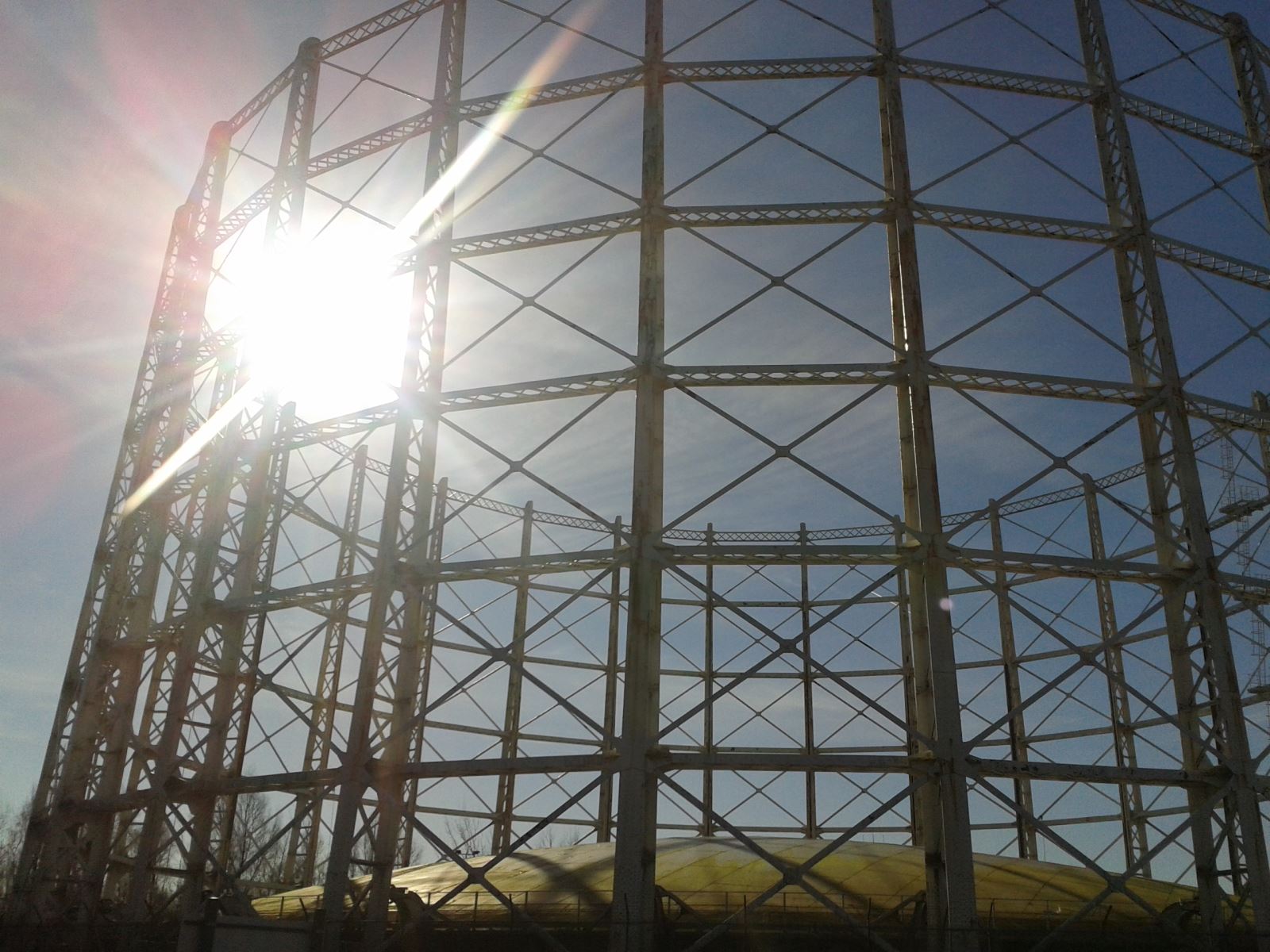Love them or loathe them, you can’t deny that there is something provocative about the silhouette of gas holders at the edges of our towns and cities. Monuments to an industrial age that’s now long gone, obsolete gas holders are fast disappearing from our urban landscapes.

Gas holders first started appearing in the British landscape more than a hundred years ago, a by-product of increased industrialisation, and created to hold gas for both domestic and industrial use. Initially they stored ‘town gas’ – created from the burning of coal – and later, natural gas. At peak times, when the former network of gas pipelines was unable to meet demand without losing pressure, gas was drained from these holders to maintain an even supply. Like an exhaling lung, the cylindrical container, encircled by its spider’s web of steel, would slowly descend, providing gas to the factories and homes around it. When it had done its job, the domed container would gradually be refilled, ready for the next breath of life into the town’s activities.
With the discovery of natural gas in the North Sea in the 1960s, the UK gas network was overhauled. Pipelines were replaced, expanded and improved, and the need for gas holders became few and far between. By the 1990s, the UK distribution network was more than up to the job of both holding gas under pressure, and satisfying the ebb and flow of demand directly. Better methods of storage were identified: in summertime, high pressure gas was injected into gas fields and salt cavities to provide supply during the peaks caused by the winter’s chill. Closer to the end user, line packing raised gas pressure overnight to answer the breakfast and dinner rush next day. With such solutions on hand, it wasn’t long before the decision was taken to remove gas holders from our skylines entirely, with demolition plans announced in 2013.
The National Grid alone owns more than 500 gas holders, and is well into its programme of returning their (not inconsiderable) footprints back to communities – for housing, development and parkland. But it’s far from a straightforward demolition process. Due to the surrounding live gas infrastructure, gas holders must be dismantled piece by piece with precise accuracy. Small, skilled teams work hard to detach and lower individual plates from the domed containers before disassembling the supporting frame. To fund this costly and precarious exercise, every scrap of metal is recycled. It’s a big job.
You might think that the decision would be met with unanimous applause. Not so. There are mixed feelings about the demise of these skeletal structures. Many people have grown up beside gas holders, and associate them with a period of (albeit manual) jobs for all, good housing, and of relative prosperity. Many gas holders have become accidental icons – Scots will remember the huge gas holder on the M8 outside Glasgow adorned in the 80s by the ‘Glasgow’s Miles Better’ banner that effectively rebranded Glasgow. Cricket fans are familiar with the gas holder that towers over the Oval. Our fascination with these structures is quite something: gas holders dismantled to allow construction of the new Channel Tunnel Rail link were later painstakingly re-constructed near St Pancras as part of a housing development, and another re-purposed as a park. Gas distributors nationwide have had to take this unexpected nostalgia pretty seriously, engaging with local communities to record residents’ memories, photographs and mementoes of gas holders scheduled for dismantling.
As the saying goes, there’s nowt funnier than folk. Some of us are more than capable of getting misty-eyed about a tower of steel and iron. Others will be glad to see the back of them.
It’s a marmite thing.
.JPG)